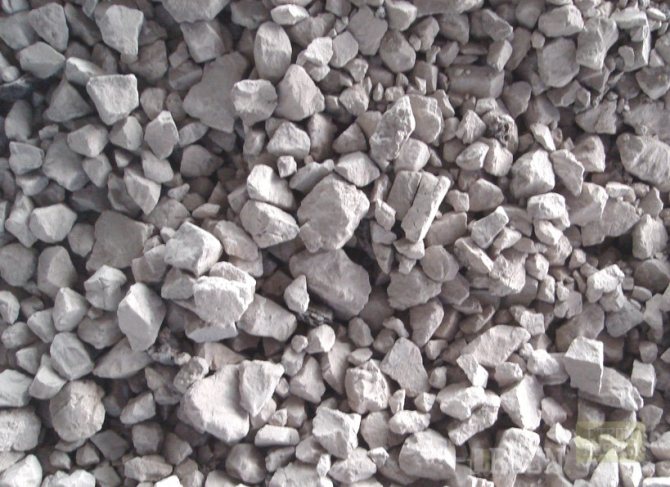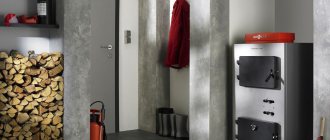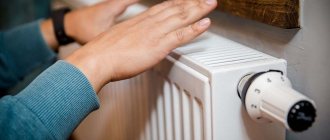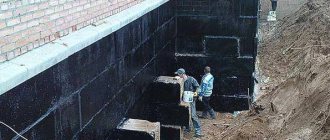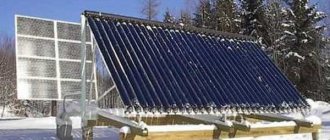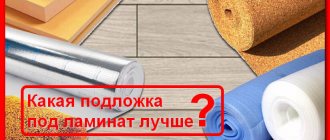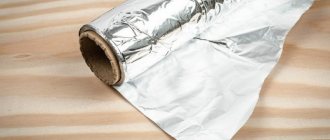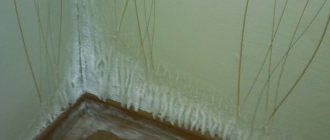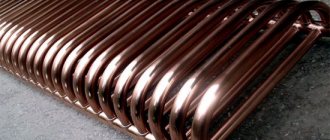How to dilute lime
Lime is a popular wall decoration material that has disinfectant properties and is not susceptible to mold and mildew. Such a finish is mainly found in public places where a coating that is resistant to abrasion and mechanical stress is required.
General information about lime
Lime is a mixture of substances that are the product of calcination of limestone rocks. On sale most often you can find lumpy quicklime and slaked fluff. Lime is considered the most hygienic type of finishing, since it destroys all microorganisms that get on it. In addition, it has a high moisture resistance and strength. When the limescale coating is completely dry, a film forms on the coating, which provides such a long-lasting lime whitewash. It is also worth noting that the cost of lime is quite low compared to other types of finishing materials.
Do not forget about some of the shortcomings of this material. If the master performing the work does not know how to properly dilute the lime and makes the solution in the wrong proportion, then bubbles, streaks and streaks will appear on the treated surface. When dry, a very thick solution will begin to bubble and fall off, and too liquid will not give the desired color on the wall. That is why it is necessary to dilute lime strictly according to the instructions and in the right proportion.
In construction, this material is often used as a plasticizer for cement mortars. Lime perfectly binds the solution and prevents it from cracking. It is an indispensable ingredient in plaster mixes. In addition, it helps the coating adhere to stone and wood surfaces. But for this you can only use slaked lime.
Lime is also used in horticulture to treat trees and reduce acidity in the soil. To whiten trees, lime should be mixed with copper sulfate. Animal skins are also treated with this substance, water is softened and disinfected with it, and bleach is used in medicine for disinfection of premises, devices and water.
How to dilute lime for whitewashing
Now it is quite difficult to find a master who will take on this work, because the work is not the cleanest, and no one will work for low pay. So you have to whiten yourself. Do-it-yourself whitewashing is not at all a difficult task, but very unpleasant, and most importantly, dirty. Before work, it is necessary to cover floors and furniture with foil, if it is not possible to completely empty the room. Also prepare protective clothing.
Whitewashing consumption primarily depends on the method of application and on the surface to be treated. If you apply the whitewash with a brush, the consumption will increase. Brick walls will require more material than smooth walls. Approximately 0.5 liters of finished whitewash will be needed per 1 sq. m.
In shops you can find slaked and quicklime. Slaked is sold in the form of powder - fluff lime, and in the form of lime dough. Fluff lime should be diluted in a proportion of 3 liters of water per 1 kg of powder. Accordingly, from one package of fluff weighing 2 kg, you will receive 6 liters of whitewash, which is enough for about 12 square meters. m of surface, only if it is not brickwork. Dilute the finished lime dough in the ratio of 3 liters of water to 1 kg of dough.
Quicklime, lumpy, must first be extinguished, and only then diluted with water. To do this, lime must be poured with water in a 1: 1 ratio. As a result, you will get a powder, and if you add three times more water, you will get a lime dough.After that, the resulting powder or dough can be diluted with water. From 1 kg of quicklime, approximately 10 liters of whitewash are obtained, ready for use. You will not calculate the whitewash consumption up to the square. Lime is an inexpensive material, so you can easily buy a couple of extra packages.
Observe precautions when slaking lime. Extinguishing produces a lot of heat and steam. Slaked lime can be sprayed out of the container. In this case, rubber gloves, goggles and heavy clothing will help prevent scalds from getting on your skin. After quenching, the solution must be allowed to stand for at least two weeks, and only after that it can be diluted with water and start whitewashing. It is advisable to buy slaked lime, because it is much easier, faster and safer to prepare it for work.
In the diluted lime, at the rate of 10 liters, you need to add 2 tablespoons of drying oil, 100 g of table salt and paint blue. But before that, salt and blue are diluted in hot water. These components give the whitewash whiteness, and the drying oil promotes better adhesion of the whitewash to the surface and gives it strength. The saturation of the solution mainly depends on the method of its application. If you apply the whitewash with a brush, then make the solution thicker, and when applying the whitewash with a spray, make a more liquid mixture and be sure to filter it through several layers of gauze.
You can refine the composition of lime by adding additional ingredients to it. So you get a paint with completely new qualities and even properties. In addition to water, water glass can be mixed with lime. glue, soap, salt, milk, flour, egg whites and any color scheme. When adding color, you can get any shade and your whitewash can easily turn cream, yellow or even brown. In some cases, linseed oil is added to lime, most often this technique is used to whitewash very smooth surfaces on which paint does not fit well, for example, furniture. Glue is added to make the lime more viscous, and after drying, it does not stain things so much. As you can see, an inexpensive lime wash can be a great paint for all surfaces. Its main drawback is that it is poorly suited for whitewashing walls, since it sticks strongly to hands and clothes. This method is appropriate if it is the upper half of the wall.
paints and varnishes
49 votes
+
Voice for!
—
Against!
Water emulsion is good, but fluff is cheaper and better for disinfection. This is due to the fact that in addition to its coloring ability, lime has an antiseptic property, therefore it prevents the formation of fungus and the appearance of mold on any surfaces. The article will focus on the preparation of lime.
Lime composition
- Lime is usually called materials after firing and a special technology for processing such natural materials as chalk, shell rock, limestone and other carbonate rocks. Lumps of rocks heat-treated in different types of furnaces at +1000 - 1200 degrees turn into pieces of various shapes.
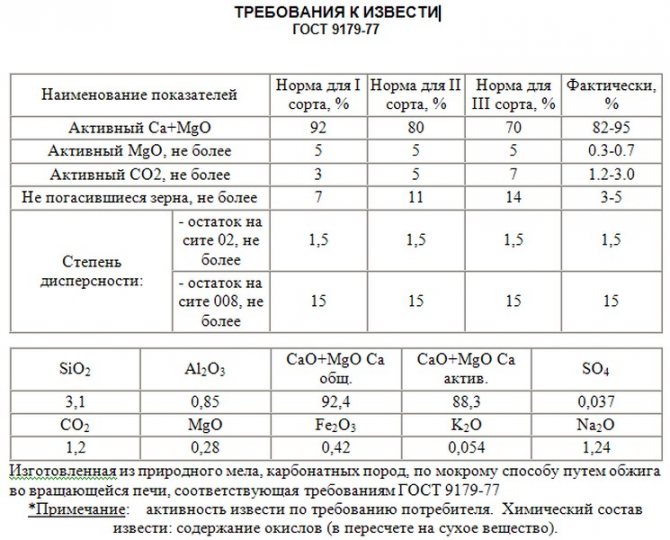
- For further use, they undergo special processing without any chemical components or catalysts. Therefore, a 100% natural material is obtained, in the composition of which a small content of mineral additives and clay impurities is allowed.
- Lime is most often used in construction. And not only. Special grades of lime are widely used in ferrous metallurgy, food, pulp and paper, leather, chemical, textile and sugar industries. Lime is also used by agricultural workers and environmentalists to neutralize flue gases or water drains.
The popularity of lime
History has not preserved the name of the one who first thought of using the unique possibilities of lime.It is quite possible that it was one of the first finishing materials for decorating the homes of our ancestors. Obtaining patents and copyrights for innovations appeared already in the times of modern history. Now he would be among the richest oligarchs in the world.
Indeed, according to experts, about 300 million tons of lime are produced annually in the world. Of these, 120 million tons are sold on the market. Russia is among the leading manufacturers of this finishing material. About 10 million tons of lime are produced annually in the country. Of these, 4 million tons are for construction.
- Longer than all decorative materials and more often lime is used for whitewashing. Using it does not require special skills and physical effort. It is reliable and not too burdensome for the family wallet.
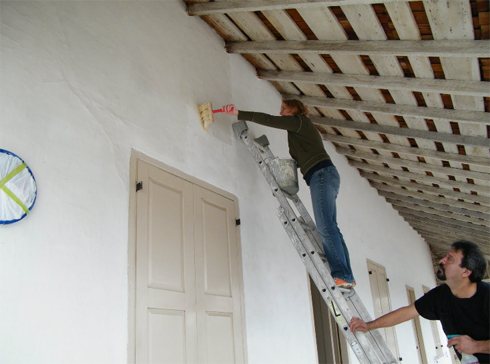

- Whitewashing with lime mortar of wooden structures or walls of houses is a tool used and tested for centuries. It was made not only for decorative purposes, but also to prevent wood decay, fire protection.
- Today, in metropolitan areas, almost no one covers the walls of rooms with lime. However, in the rural outback, they still prefer to use it to cover hidden beams, invisible rafters or internal purlins.
Varieties of lime
Silicates impart hydraulic properties to lime. Depending on the degree of their content, lime is considered air or hydraulic. Hydraulic lime has the ability to enhance the hardening process and maintain the strength of solutions both in air and in an aqueous medium. Depending on the content of clinker minerals, it can be weakly hydraulic or highly hydraulic.
Air lime is intended to ensure the hardening of the mortars used in construction and to maintain their strength at normal humidity levels.
According to the level of oxide content, they are distinguished:
- calcium;
- magnesian;
- dolomite.
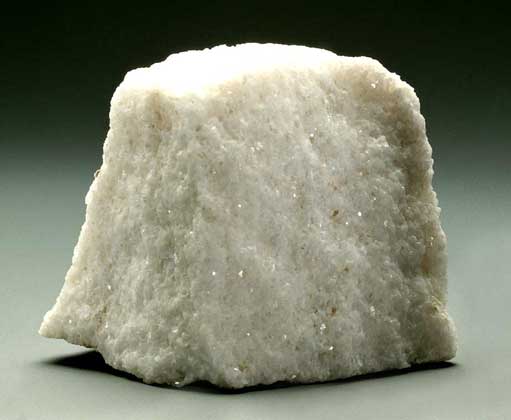

By the type of processing, lime is:
- lumpy, so-called boiling water;
- ground in the form of a powder obtained by crushing the burnt lumps;
- fluff, which is a slaked material obtained after slaking lumps with water;
- lime dough - a product of quenching lumpy raw materials;
- lime milk - a white suspension.
In addition, lime is subdivided into:
- quickly extinguished within no more than 8 minutes;
- medium quenching - no more than 25 minutes;
- extinguishing slowly for at least 25 minutes.
Powdered lime is available with or without additives. The most famous type is quicklime. It is widely used in the manufacture of concrete, construction, finishing, binding and antiseptic solutions. With its help, an artificial stone is produced.
When using different technological parameters of burning rocks, lumps of lime with different degrees of strength are obtained:
- hard burnt;
- softly burnt;
- intermediate option.
As a material for construction work, softly burnt lime is often used, in which:
- smallest grain size;
- lower density;
- minimum blanking time.
Heat is generated during the quenching process. If the safety precautions are not followed, there is a risk of severe burns.
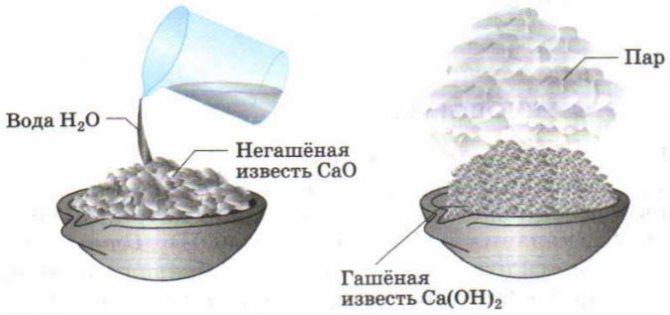

From the certificate of conformity for the quality of lime, you can find out about the type and condition of lime, the percentage of impurities. This document is issued only to organizations that comply with GOST in the manufacture of material.
What lime is made of
The type and grade of lime determines the main area of its use.
- Lime for construction works made from rocks containing a large percentage of calcium and magnesium. It is used as a plasticizer in concrete mixes and bonding solutions. Such a brand is sold with lime dough or in lumps and fluff.
- For the manufacture of hydraulic lime by firing, limestones with 6-20% content of clay impurities are used. This grade is used for the production of low types of concrete, because it has low ductility, in contrast to a high level of strength. Hydraulic lime is more often used in the construction of structures that will be operated in high humidity conditions.
- Lumpy lime used as a semi-finished product for the preparation of powders or solutions. Store it in closed warehouses to protect it from moisture. It is implemented most often for the preparation of whitewash solutions.
- Garden lime used to enrich acidic soil with calcium. Without a sufficient amount of it, plants grow and develop poorly. Slaked and quicklime are added to the soil in rainy spring or autumn weather. Sediments contribute to better dissolution of limestone.
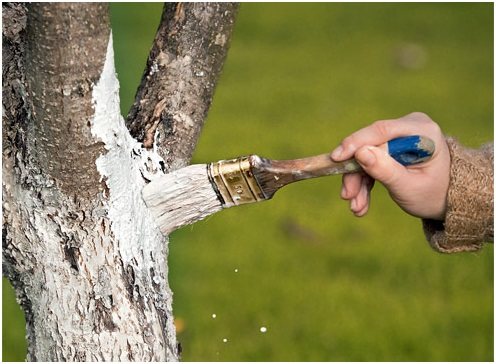

- Porous white mass soda lime is caustic soda mixed with slaked lime. Another area of application is the production of gas masks and pressure chambers, equipment for divers.
- As part of bleach free chlorine and calcium hydroxide. It has powerful disinfecting and whitening properties.
Lime properties
- Low cost... In the rating of materials, lime in lumps is rated quite high. It is almost impossible to find materials for finishing works with the same combination of price and quality.
- Disinfection... Bacteria that get on the lime film die.
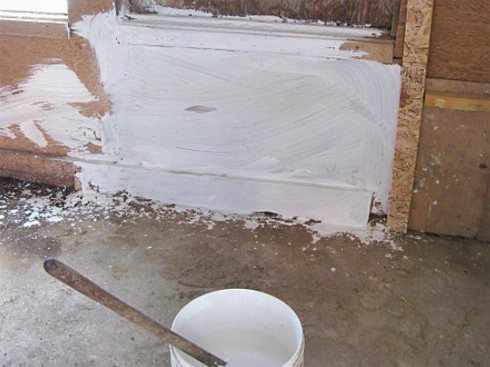

- Moisture resistance.
- No unpleasant odor.
- Versatility... Can be used both on old whitewash and on new surfaces.
- UV resistant.
- Dye friendly.
There are two main disadvantages of lime:
- Risk of occurrence streaks and streaks, bubbles, if the rules of the percentage ratio for the preparation of a solution for whitewashing or concrete are not followed. A very liquid consistency will not paint the surface to the required saturation, and a thick whitewash solution, drying, will turn into bubbles and crumble.
- Extreme caution is required due to causticity when handling lime..
DIY lime
Lime for whitewashing is used on facades after plastering, surfaces of walls and ceilings in basements and rooms with high humidity or dry, kitchens, toilets. The lime composition is firmly indifferent to the effects of water and temperature changes. For example, ceilings are whitewashed with milk of lime, and even walls after plastering are painted with lime-based paints.
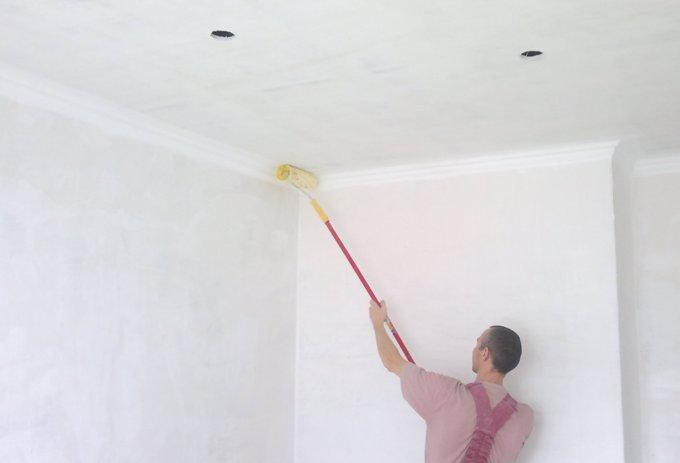

- Lime is used for primers and water-based paints for finishing surfaces inside and outside, not only as a paint, but also as a binding element. However, for tinting lime mixtures with an alkaline character, only alkali-resistant pigments are used. For example, for 1 kg of lime, no more than 100 g of soot or chromium oxide, mummy or umber is added. These dyes are diluted with water to a thick porridge. After 5 hours of exposure, stirring vigorously, add color to the fluff, which is diluted to the consistency of milk.
- It is more rational to buy dry lime. It lasts long enough. It doesn't take long to get ready for use.
- Before mixing lime, large lumps must be crushed and extinguished. Depending on how the solution will be used, a fluff (powdery solution) or dough is prepared. To do this, you need to take a different amount of liquid.
- To prepare a fluff for whitewashing a surface with an area of 2.5 squares, you must take a sufficiently deep container without rust. This is necessary because during the slaking of lime with water, the volume increases by 2-3 times.
- Place 1 kg of lumps of lime in a bowl. Pour 0.75 - 1 liter of cool water. Cover loosely to allow steam to escape. If you take little water to slake lime, it can “burn out”.If there is too much water, the lime lumps can "suffocate".
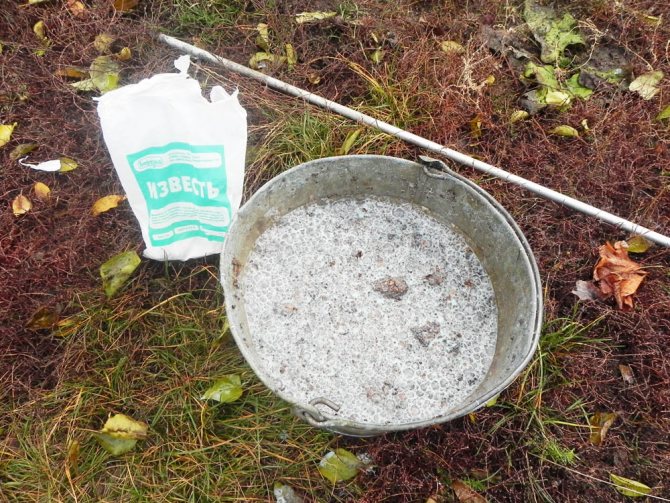

- The procedure should be carried out with extreme caution, because the solution heats up to about 140-150 degrees. The boiling mixture fizzes and splashes, so it is better to play it safe and wear protective goggles and gloves before extinguishing the lime.
- During the 8-30 minute boil, stir the bubbling mass thoroughly with a wooden stick.
- When the extinguishing process is completed, you need to close the container with a lid and put it in the cellar for 15-30 days. Only after such exposure does the material acquire the most effective, disinfecting and reliable properties.
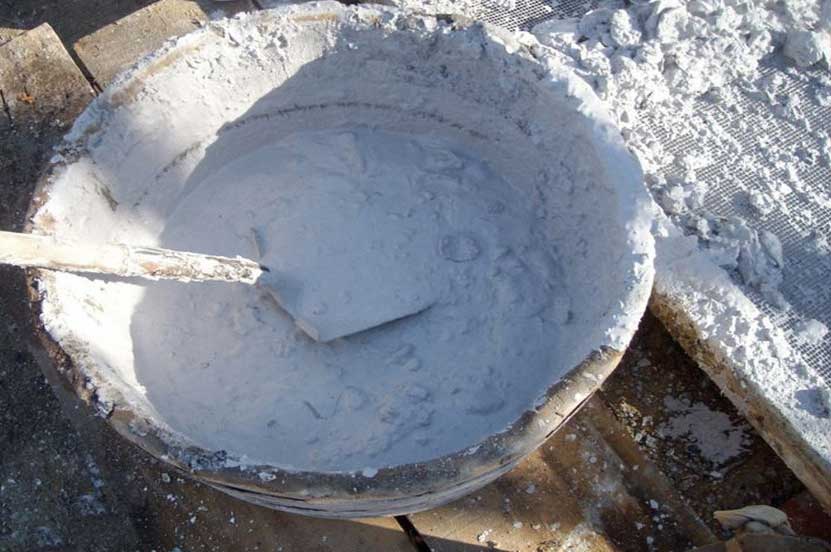

- On the day of whitewashing, you need to dilute the fluff with water. Whitewashing walls or ceilings is done with milk of lime, obtained from thoroughly mixing 3 parts of water with 1 part of freshly slaked lime. The liquid should be added so much that on the stick, which is stirring the solution, there remains a perfectly white lime in the form of a dense and even film.
- For the preparation of lime dough, the operating procedure is the same. In addition to the amount of liquid, which will require much less.
Five tips from the professionals for working with lime
- To increase the strength of the coating and prevent swelling of the plaster layer, 10-15% of paint with a latex base or wallpaper glue is added to the milk of lime.
- For tighter adhesion of the lime milk solution, green soap (1 tablespoon) is added to ½ bucket of whitewash solution.
- To give the decorative whitewash additional durability, linseed oil (1/3 of a full tablespoon) and table salt (about 5 g) are added to this volume. Everything is thoroughly mixed, and then filtered through a fine sieve to remove undissolved lumps and grains.
- A light bluish tint that favorably sets off the ceiling surface in daylight can be obtained by adding blue (20 g).
- Painting with lime dyes should be done on cold or damp days.
Lime consumption
- Whitewashing the surface of walls, ceilings or other building structures is considered the most inexpensive finish. Consumption depends on the selected application technology and surface smoothness. More whitewashing is required when using a brush. Perfectly aligned walls will take less milk of lime than painting brick surfaces. Approximate consumption for 1 m² of flat walls is 0.5 liters of ready-to-use whitewashing solution.
- Usually, professional craftsmen estimate whitewashing 1 m2 of walls in one layer at 50 rubles and more. The price depends on the need for cleaning from dirt or paint, the surface structure, the number of layers.
Lime consumption for whitewashing


In terms of cost, it is more profitable to use lime than to paint the walls with water-based paints or decorate with other materials. And in terms of quality characteristics and antiseptic properties, it surpasses many of them.
How to whitewash a house
Plastering the walls before whitewashing will allow you to get even, beautiful ceilings. But whitewashing with lime is considered a cheap finish, so walls are usually not leveled or putty. In order for the whitewash to lay down evenly and not peel off after a week, it is necessary to clean the surface and remove all dirt. When whitewashing the ceiling with lime, the chalk whitewash will have to be completely removed. The old whitewash can be left in the event that it adheres well or partially removed. Yellow spots on the ceiling that remain after flooding neighbors can be washed off with whiteness. A solution of copper sulfate is very effective in removing stains. But you need to remember that for further repairs, if you paint the ceiling with water-based paint. stains may appear again. Only already green.
The surface for whitewashing must be absorbent; whitewashing cannot be applied to oil paint.Under no circumstances prime the ceiling and walls with an ordinary primer, as it creates a film on the surface, along which the whitewash will roll or collect in drops on the ceiling.
At the next stage, according to the selected recipe and taking precautions, whitewashing is prepared. Now you can start applying the first layer. The work surface needs to be slightly moistened so that the lime can carbonize, which will determine its strength. The first layer on the walls and ceiling should be applied in the direction from the window, and on the stove - with horizontal lines. If you do this with a spray, then spray the solution in a circular motion in the selected direction.
It is very important to apply the second coat before the first coat is dry. Now the white must be applied in the opposite direction so that no roller or brush marks are visible. In general, it is better to use a special brush for whitewashing. Since the first layer lays down well with a roller, but when the second layer is applied, problems begin, since the whitewash stretches behind the roller and lags behind the wall. They are successfully used for whitewashing and spray guns, in this case the lime evenly falls on the surface, while the consumption is much lower than when working with a brush. It is advisable to whitewash on cloudy days or in the evening so that the sun's rays do not hit the surface. Such work is not recommended in the hot season, as moisture evaporates too quickly, and the layer becomes weaker. In general, the lime coating is reliable and durable, it will last about 4-5 years.
https://estroyka.com
Whitewashing is a time-honored way of treating the surfaces of walls and ceilings. Despite the range of modern building materials, lime does not leave the store shelves. What's the secret?
Whitewashing with lime or chalk: which to choose?
Whitewashing as a way of finishing the surfaces of living quarters is becoming less popular. Modern materials are increasingly appearing in our apartments, and there is no longer any special desire to mess with the bleach solution. But, nevertheless, there is still a demand for lime and chalk whitewashing. This finishing method is widely used in educational and medical institutions, in utility rooms, etc.
Whitewash can also be found in apartments, for example, on the ceiling in the kitchen or bathroom. Quite often, a bleaching solution is used to decorate a garage, shed and cellar in backyard areas. And if you go outside the city, then in the villages you can still find neat white houses, in which, of course, the stove takes the central place. Whitewashing the kiln with lime is still relevant today.
If there is a need for whitewashing, then first of all you need to choose the material on the basis of which the bleaching solution will be made. The most common options are chalk and lime. Of course, each of the options has its own positive and not very good properties. What do you know about them? Nothing? Then meet:
Lime is a material that is obtained in the process of burning carbonate rocks. It is used both in construction and to obtain various chemical compounds. For bleaching, slaked lime is used, which is obtained by combining lime powder with water. Possesses the following positive characteristics:
- affordable and low cost of material;
- has bactericidal properties;
- resistant to temperature fluctuations;
- moisture resistant;
- able to seal small cracks;
- adheres well to brick, stone, wood and plaster.
Whitewashing also has negative aspects:
- defects (stripes, streaks, stains) are possible;
- there is a possibility of getting burned.
Since lime is a sodium alkali, precautions must be taken when working with it in order to protect your health.
Chalk is a common and familiar material of natural origin. Advantages of the chalk finish:
- affordable price;
- environmental friendliness;
- deep whiteness of color;
- easy to wash off - easy to remove the white layer;
- simplicity and safety in work.
Disadvantages:
- easy to wash off - not suitable in a humid environment;
- defects (stains, streaks, bubbles, etc.) are possible.
How to extinguish lime for whitewashing correctly and safely?
In the event that lime turned out to be a more suitable option for finishing the necessary surfaces, then you need to familiarize yourself with the rules for its preparation and extinguishing. You can buy this alkali in a hardware store in slaked (powder, dough) and quicklime (lumps). In the first case, it can be immediately added to the solution, and in the second, it can be pre-extinguished.
Before extinguishing lime for whitewashing, you need to make sure that all precautions are taken and there is no danger to health. For safe work, you must:
- put on overalls and rubber gloves;
- protect your eyes with special glasses, and your nose with a respirator;
- extinguish lime only in metal containers;
- choose a well-ventilated area for this procedure.
In case of contact of lime on the skin, rinse immediately with plenty of running water for 15 minutes, and then be sure to consult a doctor.
After following all the safety procedures, you can start slaking the lime. Slaking is a chemical reaction in which lime is combined with water. As a result, you can get fluff (powder) or lime dough, which will depend on the amount of water used.
To get fluff, you need to take 1 part of lime and 1 part of water, i.e. 1 kg of lime lumps per 1 liter of water. Lumps are placed in a clean deep container, which are then filled with cold and clean water. When reacting, the lime heats up very much, which is accompanied by hiss and splashes. It will take about 30-40 minutes for the alkali to calm down. After that, you need to stir it with a wooden stick. As a result, after evaporation of moisture, you get a powder.
Lime dough is a plastic mass, for the preparation of which you need 1 part of alkali and 3 parts of water. The further process is not particularly different: water is added in small portions to a container with lime lumps and gradually stirred. During the reaction, moisture evaporates, but its content in the final product will be higher, which will allow you to get a pasty consistency. With the help of the test, cement-sand mortars are strengthened and mortars for plastering are prepared.
How to dilute lime for whitewashing at home depends on the form in which the alkali is, it can be prepared according to several recipes. Required ingredients in all formulations are water and table salt, so you should check for their presence. And then we choose a recipe, adapt it to the required volume and prepare a bleaching solution, the approximate consumption of which is 0.5 liters per 1 m2 of surface.
Recipe 1. Fluff - 400 g, water - 600 ml, table salt - 5 g, drying oil - 0.3 tbsp. Mix all ingredients thoroughly and pass through a sieve to remove lumps. To give a bluish tint to the resulting solution, you can add ultramarine - 20-25 g.
Recipe 2. Dough - 3 kg, water - 10 l, table salt - 100 g. The dough is diluted in half the volume of water and milk of lime is obtained. Salt is diluted separately in 1 liter of hot water, added to milk and mixed thoroughly. Coloring compositions are also soaked separately in water and gradually poured into the solution. Before use, the bleaching mass is brought to a volume of 10 liters by adding the required amount of water.
I will note right away: I am not going to prove the usefulness or uselessness of this venture. On the Internet, two camps have long been formed, which are constantly fighting among themselves, proving points of view to the point of loss of pulse.
Someday I will study the issue, but not in this article.It is intended for those who want to learn how to dilute lime to whitewash trees, and get an idea of how to do it correctly, according to science.
Lime consumption for whitewashing
Where is whitewashing used?
Lime has excellent antiseptic properties and is cheap. Lime whitewashing, due to the fact that it is a good antiseptic, is recommended for medical institutions, including schools, kindergartens.
You can whitewash a basement or garage with lime - it will become lighter from the white ceiling and walls, but it is also not expensive. Lime whitewashing also creates a strong film so it won't stick to clothing if it touches a wall.
Lime whitewash is used for finishing wet visits due to its moisture resistance.
Whitewashing with slaked lime helps to disinfect the surface, as a result of which it is used to whitewash cowsheds, chicken coops, cellars, as well as other premises for livestock purposes.
The bark of trees is also treated with lime whitewash.
How to whiten correctly?
1. Find a master, however, for a low pay, he is unlikely to work. If you want to save money, then you should whiten yourself.
2. Do-it-yourself whitewashing is not a very difficult job, but dirty and unpleasant. Before starting work, you should close the furniture and floors with foil, or completely empty the room. Protective clothing should also be prepared for yourself.
Whitewashing the walls
Lime consumption
Whitewashing consumption, first of all, will depend on the surface to be treated and the method of its application. If you apply whitewashing with a brush, the consumption will increase. Smooth walls require less whitewash than brick walls. Approximate consumption for smooth walls per 1 m² is about 0.5 liters of finished whitewash.
Quicklime and slaked lime are on sale. Slaked is often sold in the form of powder - lime dough and fluff lime.
Slaked lime
1. Lime fluff is diluted in a ratio of 1 kg of this powder to 3 liters of water. One package weighing 2 kg should make about 6 liters of whitewash. This whitewash should be enough for 12 m² of surface, but in the event that the whitewash does not go to the brickwork.
2. The finished lime dough should be diluted as follows: 1 kg of dough, about 3 liters of water. Considering that with one liter of whitewash it is possible to whitewash about two squares of walls, it is quite easy to calculate how much lime dough will be needed.


Lime consumption rate per 1m2 of whitewashing trees
Repeat the procedure until the trace is removed. For 1 sq. m usually 1 liter of prepared alkali is enough. Wipe the cleaned area well with a wet cloth. To remove soot from the walls, use a 3% solution of hydrochloric acid. If mold is found, you can use bleach or copper sulfate solution. Any of the ingredients are diluted in water. Repairing minor flaws and priming the surface Cracks in the walls will need to be repaired. Remove all fragile particles so that they do not fall off in the future. Prime the cracks and start filling them. For the putty you will need: Dilute 30-50 grams of glue in a liter of water. Dry gypsum and chalk are added to this mixture. For the correct preparation of the putty, the consumption of ingredients is: 1 share of gypsum, 2 shares of chalk and the same amount of diluted glue. Having combined all the components, the mixture is thoroughly mixed until a doughy mass is obtained.
Lime consumption per 1 m2 for whitewashing
If you use lime, then the average consumption for the ceiling treated with putty is 500 grams per square (accordingly, the total area of the ceiling that needs to be whitened is multiplied by 0.5 liters, we get an approximate number of liters) Why is it approximate, and not accurate - since the whitewashing tool is used differently, and each master has his own professionalism, then the consumption will differ.0.5 liters - this is if you whiten it in two layers with a special brush, but if you use a spray gun, you get less consumption. But even if you need to whitewash in three layers, this does not mean that you need to add another 0.25 liters per square, since the third layer will be at a lower consumption. Now about the dry mixture: 1 kilogram of lime after dilution produces 3.5-4 liters of the finished solution.
GSN table 47-01-097. whitewashing of trees
Most often, this material is used in repair work for finishing the ceiling. There is also a kind of medicinal whitewashing for garden plants. Another term "whitewashing" refers to the very process of finishing work. As noted earlier, lime, chalk, and also water-based paint are used to whiten the ceiling. Each material has its own advantages and disadvantages, as well as differences in finishing work. Bleaching the ceiling with a chalk-based solution is one of the cheapest ways to decorate ceilings, since the price of chalk is quite low.
How to calculate the amount of materials and the cost of whitewashing?
For staining 10 m², prepare:
- 60 g of laundry soap,
- 90 g of carpentry glue,
- 2300 g of chalk,
- 4 liters of water.
Dissolve the glue in warm water and add the grated (shaved) soap. Mix all ingredients well until the lumps disappear completely. Finally, add chalk. Mix the resulting solution, strain using a nylon stocking.
Whitewashing walls with lime - DIY budget repair instructions
Otherwise, after a while they will make themselves felt on the newly whitewashed walls. If traces of rust are found, they must be washed off using water. Treat with copper sulfate diluted in water (take 50 g of vitriol per 1 liter of boiling water).
In the third bowl, chalk is combined with water. In conclusion, all mixtures are mixed and a primer is obtained at the exit. Get rid of greasy traces with a solution of soda ash. In a liter of water (hot), dilute 3 tbsp. l. soda. A white clean cloth is moistened in a hot solution and applied to a greasy spot.
Consumption rate of milk of lime when whitewashing
What is the lime consumption for whitewashing? The cooking method itself and what tools you may need. We will talk about this later in this article. Ceiling whitewashing Lime is a construction product that is produced by special firing of rocks. For the preparation of lime, they extract: chalk, limestone, shell rock, dolomitized limestone. Lime can be classified by type, depending on the rock from which it was mined. Types of lime based on basic oxide:
By the method of extinguishing, there are:
- Medium blanking,
- Quick extinguishing,
- Slow blanking.
In order to prepare lime for whitewashing, you will need: lumpy lime, a stirring stick, water, a container. Cooking process
- Any lime must be slaked (regardless of composition).
Consumption of materials for painting surfaces with lime and silicate solutions
How to whiten correctly? 1. Find a master, however, for a low pay, he is unlikely to work. If you want to save money, then you should whiten yourself. 2. Do-it-yourself whitewashing is not a very difficult job, but dirty and unpleasant.
Before starting work, you should close the furniture and floors with foil, or completely empty the room. Protective clothing should also be prepared for yourself. Whitewashing of walls Lime consumption Consumption of whitewashing, first of all, will depend on the surface to be treated and the method of its application. If you apply whitewashing with a brush, the consumption will increase. Smooth walls require less whitewash than brick walls. Approximate consumption for smooth walls per 1 m² is about 0.5 liters of finished whitewash. Quicklime and slaked lime are on sale. Slaked is often sold in the form of powder - lime dough and fluff lime. Slaked lime 1. All this time you need to stir the solution with a stick.There is another way of making whitewash. Consumption of cement First, prepare a small amount of water, then dilute about 2-3 kg of slaked lime in it. You can add another 400-500 g of dyes pre-soaked in water to the resulting composition, and 50-100 g of table salt is also suitable. All components are thoroughly mixed. Water is gradually introduced into the solution, the volume is brought to 10 liters. The composition, of course, can be slightly blue and ultramarine. There is, of course, a ready-to-use whitewash. It resembles a thick plastic mass consisting of a synthetic binder (for example, a PVA dispersion), all kinds of pigments, and various moisture-protective additives. The consumption of such a whitewash is approximately 100-300 g per 1 m2. The finished whitewash can be diluted with water, strictly adhering to the requirements specified in the instructions.
Lime consumption rate per 1m2 of whitewashing trees
After that, the mixture is well mixed to obtain a plastic homogeneous substance. Such a composition is applied to the ceiling in approximately 1-3 layers. Naturally, the more layers, the higher the whitewash consumption. Lime prepared for whitewashing.For safety and individual protection, you must wear special glasses, a canvas suit, gloves. further your actions will be:
- It is not recommended to use slaked lime immediately. It must be kept for at least 15-30 days with the lid closed (you can in the cellar). Such a solution will perfectly cope with all its functions, lie flat and disinfect the surface,
- The question is often asked about what is added to lime for whitewashing. Let's take a look at the fluff. For whitewashing, fluff is diluted with water to the desired consistency. For whitewashing, the required density can be easily recognized.
Whitewashing the surface will not be particularly difficult, and you can cope with such a task on your own, without involving masters. In order to get a high-quality coating as a result of work, you need to know some of the subtleties of working with such a material. Features and types Whitewashing is a solution of a certain substance that is used to whiten the surface. Chalk or lime is mainly used as a basis for such a solution. Lime can be called the second most popular material, this is due to the fact that walls and ceilings treated with it can resist damage by fungus and mold. Another equally popular material is a composition called fluff. It is a powder that has a white color and has passed the quenching stage after liquid and fixing agents have been added to it. Modern production produces lime:
- slaked, which is supplied to points of sale under the guise of paste or powder,
- quicklime, sold as pellets or large lumps.
Before proceeding with the repair, you need to know what technical characteristics are inherent in whitewashing, what is its application. To begin with, we note that a dry mixture for whitewashing is used almost everywhere. Most often, all the granules dissolve in the quenching process, so that there are no further incidents in the work, the solution must be mixed with special care, and before working with whitewashing, it is advisable to strain the consistency through a special sieve. Features Today, in order to use plaster, it is enough to dilute it. In addition to determining the volume of material per 1 m2, you also need to know the shelf life of the composition, as well as how it needs to be diluted, whether it is necessary to wash off the old layer. If we talk about the decorative side, then even a combination of colors can be used here. Colored whitewash is no longer a rarity. So, at the KSOM plant, not only material with chalk or an adhesive base is produced, the norm for them is the production of a wide variety of compositions. The whitewash is designed to give the walls and ceiling a beautiful look.It makes it possible to refresh the interior of the room.


Why whitewash trees?
Most gardeners, answering this question, will say: "to protect trees from sunburn." This is true. But there are still factors that become whitewashed.
Frost protection
Frostbites are damage to the bark that resembles deep cracks. In severe cases, they can reach the middle of the tree, which leads to its death. They are formed with fluctuations in day and night temperatures in winter, especially in February.
During the day, it warmed up to 1 0 C, and at night there was a frost of -15 0 C - a phenomenon familiar to the regions of Russia. The bark of a tree, warming up from the sun's rays during the day, cools sharply at night. This is equivalent to immersing hot glass in cold water.
Whitewashing the tree leads to the fact that the bark heats up and cools down evenly. From physics we remember that dark color absorbs solar heat, light color reflects. This property is used in our case.
Destruction of pests
Even slaked lime is an alkali that kills most insects, especially their larvae. Many diseases of garden trees are caused by these pests, and whitewashing can reduce risks, reduce the use of chemicals, and preserve the harvest.
Inexperienced gardeners complain that whitewashing does not help. They say that there is no difference between treated wood and untreated wood. Yes it is possible. But only if you take a brush and apply the lime mortar without proper preparation. I will talk about it below.
Sunburn protection
This factor is the cause of numerous controversies on the forums. Forestry people argue that sunburn occurs only on some species of coniferous trees and never on deciduous trees.
Maybe so. But it's better to play it safe. In theory, whitewashing can protect the bark from burns as well as frost damage. The same principle of intense reflection of the sun's rays works.
The use of lime in construction work
- Lime is added to plaster mixes, mortars for brickwork in order to give them strength and plasticity.
- Lime increases the water resistance of the concrete.
- Due to its antiseptic properties, lime is used to whitewash cellars, garages, rooms where poultry or pets are kept.
- A solution of lime can be used to whitewash the ceilings and walls in an apartment, but modern finishing materials have practically supplanted the use of lime whitewashing in apartment renovations.
- Due to its low cost, lime whitewash is used in the entrances of houses, schools, hospitals.
- Lime is used to whitewash trees. Whitewashing trees with lime protects the bark from sunburn and helps fight various pests.
Preparing wood for whitewashing
At this stage, I will dwell in more detail. Many gardeners make a mistake here, or rather, they do not prepare the tree in any way. The result is pests, burns, and sadness.
Remember. You cannot whitewash wood without preliminary cleaning and disinfection. Yes, it will be beautiful. But there is no benefit.
Before cleaning, take a plastic wrap and spread it around the tree, close to the trunk. This is necessary to prevent pests and debris from entering the soil. Then proceed as follows.
- Prepare wooden or plastic scrapers (metal tools cannot be used).
- Examine the surface of the trunk and main branches for cracks.
- Carefully peel off loose bark, mosses, lichens.
- Cover deep cracks and hollows with garden varnish.
- Prune the tree if necessary.
- Treat the barrel with a disinfectant solution.
Disinfection is best done with a sprayer or trigger. In this case, the solution will penetrate even the smallest cracks. With a brush, this effect cannot be achieved.
After disinfection, the film must be carefully collected, taken away from the garden and burned.
Disinfectant solutions
Most often, a 3-5% solution of copper or iron sulfate is used in horticulture. It prepares like this:
- take 300 g of powder (for a 5% solution - 500 g);
- pour in the same amount of hot water;
- after dissolving the vitriol, bring the volume of water to 10 liters (you can use warm or cold);
- mix thoroughly with a wooden stick.
Spray the main trunk and skeletal branches with this solution. If you missed the time and the tree began to bloom, make a 2% solution.
If, while examining the tree, you find colonies of moss or lichens, vitriol will not help. Treatment with salt solutions is necessary, which can be prepared by dissolving one of the following ingredients in 10 liters of water:
- edible salt - 1 kg;
- urea - 600 g;
- nitroammofosk - 650 g;
- potassium carbonate - 550 g;
- potassium chloride - 350 g.
These solutions are applied to the areas of growth of mosses or added to the lime mortar.
If you are an ardent opponent of chemistry and do not want to poison the garden, you can use a solution of stove wood ash for disinfection. It is prepared according to the following recipe:
- take 3 kg of ash;
- add 5 liters of water;
- bring to a boil;
- cool, add 50 g of shabby laundry soap;
- mix thoroughly.
Spray the trunk and branches of the tree.
Trees can be whitened 3 days after treatment. If it rains at this time, repeat disinfection.
How to properly dilute lime for whitewashing?
You can only find quicklime in stores. These are white stones, less often sand, which have a strong alkaline reaction. When interacting with water, a strong release of heat occurs, and three types of solutions can be obtained:
- fluff;
- lime dough;
- lime milk.
What you get depends on the ratio of quicklime to water. According to the technology, you first need to get fluff and only then prepare a solution for whitewashing.
Fluff recipe
Be careful when handling quicklime. During interaction with water, the temperature rises to 150 0 С, and the solution itself boils and "splashes". If you are not careful, you will get chemical burns to your eyes or skin.
Therefore, work with gloves and protect your eyes from lime penetration. The step-by-step recipe is as follows:
- take a deep container (a bucket will do);
- pour 2 kg of quicklime;
- gently pour in 2 liters of water;
- wait for the violent reaction to pass;
- mix the contents gently until smooth.
You can use a different amount of lime. The main thing is to observe the ratio of 1: 1 or 1: 1.5, where the first value is quicklime.
How to make a whitewash solution
If you just dissolve the fluff in water, the whitewash will be washed off with rains in a month. Therefore, I recommend whitening the trees with the following solution:
- 2.5 kg of fluff;
- 9 liters of water;
- 60 g (3 tablespoons) flour paste.
Mix everything thoroughly and apply to the barrel with a brush. Instead of paste, you can add 1 kg of clay.
Note. You should have a creamy mass (milk of lime). A thinner solution will roll off the bark, a thicker one will not stick.
Lime milk is prepared in a 1: 3 ratio. If you want to whiten young seedlings, make a 1: 4 consistency or use a water-based paint.
Lime whitewash
Despite the fact that the use of chalk is the easiest and most affordable way to prepare a composition for whitening indoor surfaces, lime is in great demand. This is due to the fact that the walls and ceilings treated with lime whitewash are not susceptible to the formation of mold and mildew. The most popular composition for whitewashing walls is fluff. White powder, quenched and ready for use after adding water and fixing agents.
Read also: Picture how to make butterflies
Modern manufacturers sell lime:
- Slaked, supplied to the place of sale in the form of powder or paste (dough).
- Quicklime, sold in the form of granules or large lumps.
After pouring lime with water, close the container with a lid.
For whitewashing, only slaked lime is used, for the preparation of which you will need:
- water and lime itself, taken in a 1: 1 ratio;
- clean metal dishes without chips and corrosion;
- cover for the container;
- wooden spatula for mixing the solution.
After the quicklime is poured with cold water, it begins to boil, heating up to 130 ° C. The reaction is very violent, the liquid bubbles and splashes scatter in different directions. At this point, it is better to cover the container with a lid to avoid getting the mixture on bare skin.
It is impossible to use plastic dishes, since the solution heats up very much during the quenching process, and the composition can be mixed only after the reaction is completed. Now the container needs to be closed with a lid and put in a cool dark place for 20-25 days.
At the end of the specified time, the composition is thoroughly mixed.
A thick white film should remain on the wooden spatula. The mixture required for whitewashing is diluted with cold clean water, achieving a homogeneous opaque composition. The approximate amount of a ready-made solution prepared from 1 kg of quicklime is 10 liters.
During quenching, all lumps and granules should completely dissolve in water, but before use, the contents of the container must be thoroughly mixed, and strain through a special mesh before use.


The tool for performing bleaching can be chosen taking into account the wishes of the layman or the characteristics of the surface to be treated:
When working with a spray gun, the resulting mixture will have to be filtered through cheesecloth to remove even the smallest remaining lumps.
When is it better to whitewash trees
It is believed that trees need to be whitewashed in the spring. This is not entirely correct. At this time of the year, the main whitewashing is carried out, but it must be repeated in the fall, when preparing the tree for wintering.
Whitewashing in spring is carried out after the snow melts. In the central regions of Russia, this is the end of March - the first half of April. In the south - early March. The air temperature during this event should not be lower than 5 0 C. But you should not delay with whitewashing - you need to have time to disinfect and whitewash the trees before the foliage appears.
If you hesitate, the soil will warm up, pests will crawl out of it, the procedures will be in vain.
Whitewashing in the fall is carried out after the foliage is dropped. The air temperature should not be lower than 4 0 C. The process is the same as when processing wood in the spring - first you clean the dead bark, process the cracks with garden pitch, disinfect, and then whitewash.
Whitewashing in summer is acceptable if you notice that the lime has been washed away by the rains. The best time to do this is early in the morning before the heat starts. There is no need to do any preliminary preparation.
I think I told in detail how to dilute lime for whitewashing and about the technology of processing a tree trunk. If you still have questions - write in the comments or social networks.
We prepare the tree for whitewashing and properly dilute lime
Lime is the collective name for the products of roasting, as well as the subsequent processing of chalk, limestone and other carbonate rocks. It can be slaked (Ca (OH) 2), quicklime (CaO) and soda (a mixture of Ca (OH) 2 with NaOH).
It was not in vain that our ancestors used lime as a whitewash; this material has disinfecting properties, which makes it impossible for fungus and mold to appear on finished surfaces. Until now, almost every one of us is faced with this type of whitewash in our own entrances.
Whitewashing the walls with lime in public places allows not to carry out repeated repairs for as long as possible, because this whitewash, during the drying process, forms a special film that is resistant to abrasion.
In addition, whitewashing the ceiling with lime in baths, bathrooms, swimming pools and showers will protect it from moisture, becausethis material has good moisture resistance and durability. Lime coating is also used in the decoration of closets, basements, garages, etc. The main factor influencing the choice of this material is its cheapness and environmental friendliness in comparison with other analogues.
TO disadvantages
This coating includes the possibility of streaks, stains, streaks and bubbles when using a solution not compiled in the required proportions. If the prepared bleaching lime is liquid enough, then the color of the painted surface will be unsaturated, and if the composition turns out to be oversaturated, then the coating will bubble and fall off when it dries.
In addition, the quality of the original lime also affects the properties of the coating. The disadvantages of this material include its causticity. Therefore, when applying the composition to the surface, you need to be extremely careful, or better, before diluting lime for whitewashing, dress in old clothes and protect your hands and face with gloves and a respirator, hide your eyes behind special glasses.
How to whitewash - choosing an approach
Before deciding how to whitewash the ceiling with lime and at the same time how to prepare lime for whitewashing, it is necessary to properly prepare the base for applying such a coating. For processing, the substrate must be solid and clean. It is unacceptable to apply this coating on surfaces with rust, efflorescence, as well as with bituminous and greasy stains.
If there are cracks on the base, they must be expanded, primed, then putty and smoothed. We clean the old whitewash with a brush. We will plaster and prime the entire surface. Immediately before whitewashing, batteries, platbands, baseboards, and floors are carefully closed. All sockets and switches are sealed with tape.
For application, you can use brushes, rollers, a spray gun, as well as a regular vacuum cleaner. Brushing this whitewash is the easiest and cheapest method. It is usually used when small surfaces are to be treated with lime.
It should be noted that the quality of the layer will largely depend on the condition of the swinging brushes. It is advisable to soak the brushes in water for a couple of hours before whitening with lime to prevent the appearance of brush hairs on the treated surface.
If the surface is large enough, then a special sprayer is a better option. Such a spray must be kept at a distance of about 30 cm from the surface and at a right angle, so that the consumption of lime during whitewashing is minimal.
An ordinary vacuum cleaner can also be used as a spray. The required equipment is usually included with this device.
How to whitewash walls with slaked lime?
Before you start whitewashing the surface of the walls, you must carefully prepare the base. It must be cleaned of various stains and other contaminants. Rust stains can be washed off with water and then treated with copper sulfate. For one liter of hot water, add up to 100 grams of vitriol, stir thoroughly until dissolved. Oily stains are removed with a solution of soda ash, for this a clean cloth is dipped into the composition and applied to the dirt. Keep on until the stain disappears. If the surface of the walls has significant contamination, then they are removed with acetic acid by wiping.
After all the stains have been removed, the wall is washed out with plain water. If there are crevices on the walls, then they are embroidered, ground mixture is applied, putty, and smoothed. You can remove the old whitewash from the surface with a brush. After such work, all walls are plastered and primed. The putty mixture can be prepared independently, for this you need to mix 1 kilogram of gypsum, 2 chalk, 2 carpentry glue, add a small amount of water so that the composition is in the form of thick sour cream.
You can also use another method: 2.5 kilograms of thick slaked lime is diluted in 5 liters of water. They also put about 100 grams of common salt there. Then water is gradually added again, bringing its amount to 10 liters, the mixture is stirred well and filtered. After that, 1.5 liters of carpentry glue are poured into the composition, and 150 grams of chalk in powder are put. Such a composition for putty can also be used as a primer mixture.
Another method can be used to prepare the primer. For 3 kilograms of slaked lime, take 200 grams of laundry soap, and 100 drying oil. In this case, lime should be in the form of a dough; 4 liters of water are taken to dilute it. The soap is cut into thin slices and dissolved in three liters of hot water. Mix both compositions and add drying oil. Before starting work, the primer is diluted with water up to 10 liters.
Before you start whitewashing the walls or ceiling, you need to cover the floors, radiators, sockets, switches and baseboards, this can be done with tape or tape. Whitewashing can be applied with rollers, vacuum cleaners or brushes, which are first soaked in water for two hours to prevent hairs from falling out. When using the spray, it is held at a distance from the surface of 30 centimeters at right angles.
The lime solution for whitewashing the walls should be such that, after thorough stirring, an even and dense white layer forms on the surface of the composition. Some vacuum cleaner models can be used as a spray. In order for the composition of the whitewash to be persistent, five drops of drying oil and a pinch of salt are added to it. The solution is stirred until uniform and filtered to remove large particles.
To make the surface of the walls a bluish tint, blue is added to the composition. Before starting work, the walls must be moistened. Whitewashing is done in two layers so that it adheres firmly.
The walls or ceiling are whitewashed in cloudy or in the evening, when there is no sun, since lime does not like exposure to ultraviolet radiation and heat.
How to dilute lime for whitewashing - everything is quite simple
Very often, novice home craftsmen do not know how to dilute lime in the right proportion
for maximum results. Experts advise to take 0.5 kg of lime and 0.75 liters of water for every 2.5 m² of the treated surface.
To give the whitewash additional durability, you can add a third of a tablespoon of drying oil and about 5 g of table salt to the composition. The entire solution is thoroughly mixed and filtered through a sieve to remove lumps, grains and impurities.
To give the whitewash a light bluish tint that will look advantageous on the ceiling in natural light, you can add 20 g of regular blue to the resulting mixture.
Before surface treatment, it is necessary to properly moisten the base. Such whitewashing is usually applied in two layers. Experts recommend applying the second layer on a slightly damp previous one, because this allows for greater strength.
For finishing work, it is better to choose a cloudy day, or evening time, because lime does not like dry hot weather, as well as direct sunlight.
Plain lime for finishing was replaced by more modern materials. But in some cases it is not worth spending a lot of money, for example, if you need to make walls in an outbuilding, a workshop, or add beauty to the borders in the garden. In this article, we will consider how to dilute lime to whitewash the walls.
Use of lime
To whitewash the walls, slaked lime is used. This agent is distinguished by high disinfecting properties, as it has alkaline characteristics, lime prevents the appearance of fungus, mold, and insect pests. No cracks, bubbles or peeling appear on the whitewash, this material is resistant to moisture and temperature changes.To apply whitewash, it is not necessary to remove the previous coating, you can whitewash on the old surface, if it is not too dirty. Also, whitewashing strengthens surfaces on which small cracks appear. The main advantage of the material is its cost, in comparison with other materials it is the cheapest, this is due to the simplicity of its manufacture. With a properly prepared mixture, after applying it, a homogeneous layer is obtained that does not exfoliate.
How to prepare a lime solution?
First, you need to purchase lime powder at a hardware store. Lime fluff is usually used, it is already slaked. To whitewash a room of about 15 square meters, you need one package of material. For concrete walls with a flat surface, a little mortar goes away than for brick walls. In the second variant, the material actively absorbs liquid, and the consumption of the mixture increases. More composition goes away when several layers are applied, so the material is purchased with a margin. For convenient application, it is necessary to properly prepare the mixture, if the material is in the form of a paste, then dilution with water will be easier. To process one square meter, you need about 0.5 liters of the mixture.
To prepare the mixture, you need to prepare 1 kilogram of dry lime, and three liters of water. To prepare the pasta, the dough is diluted with water in a ratio of 1 to 3. You can use quicklime lime, it comes in lumps to make a mixture, the material is poured with water, adhering to a ratio of 1 to 3, the container is covered. After the end of the reaction, the paste will be ready, it must be left for two weeks for a high-quality infusion. Then the paste is diluted with water to obtain the required consistency. When water hits the dry material, the mixture heats up and a reaction starts, so the container should be covered to avoid the release of harmful vapors. It is necessary to add blue to the composition to give a beautiful color, half a glass of salt, and 20 grams of drying oil, this contributes to the high-quality adhesion of the mixture to the surface. About four liters of the composition are prepared from one kilogram of lime. The solution is consumed depending on the type of surface, the maximum amount is about one liter per square. Also, the consumption of material depends on the tool with which the work is performed, thin brushes or bristles leave smudges, and apply the material in thick layers. You can reduce consumption by using a spray gun; sometimes a garden sprayer is used.
Buying lime - which one to take and how much ↑
Before going to the store, you need to find out which lime to buy for whitewashing - slaked or quicklime, how much is required and what other components are needed. This will save you from going back to the building market if the solution suddenly turns out to be insufficient or its properties do not meet your requirements.
How to cook slaked lime with your own hands ↑
As you already understood, slaked and quicklime are completely different substances, which are united only by the consonant name and the presence of calcium in the composition. Slaked lime is used for household repair work. It is sold by weight at any hardware store or agricultural department.
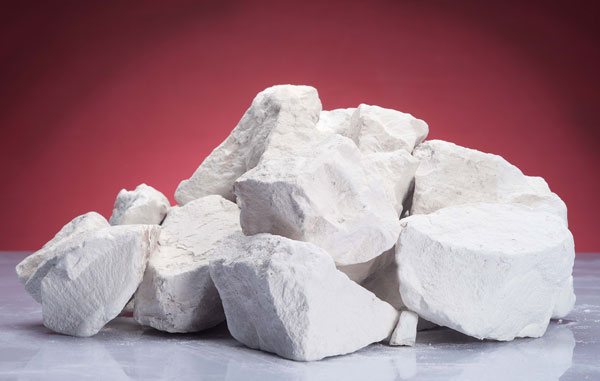

However, situations are not uncommon when the farm has a fairly large supply of quicklime and it is desirable to use it, and not buy slaked lime. In this case, you can extinguish it yourself, especially since this chemical process does not require the skills of conducting such experiments in the laboratory.
So, how to prepare lime for whitewashing from lumpy quicklime "boiling water". First you need to worry about personal protection. Since you will be dealing with a fairly aggressive alkali, take care of your eyes (goggles), respiratory protection (respirator), exposed skin (closed clothing and gloves). This should be done in the air.
Video: How to prepare a whitewash solution
You will need a deep container such as a bucket and a mixing tool - traditionally a stick. The list of ingredients is short too:
- lumpy quicklime;
- water.
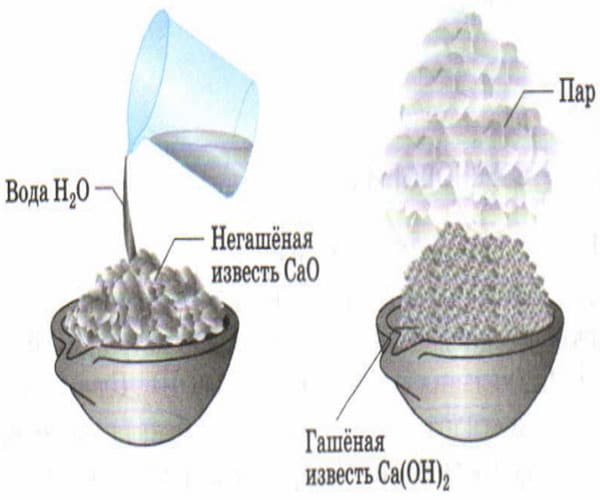

The water must be cold, this is the only condition. Even a first grader will remember the proportion - 1: 1.
- For 1 kg of calcium oxide, take 1 liter of cold water.
- Combine all this in a container and mix. Almost instantly, you will be able to observe the beginning of a powerful chemical reaction with the release of a large amount of heat. When extinguished, the mixture sometimes heats up to 150 degrees, it is not for nothing that the substance is popularly called a boiling water - the solution literally boils.
- When the reaction stops, heat and gas will cease to be released, lime can be considered "fluff", that is, slaked. However, it is not yet suitable for whitewashing.
- The solution should mature within 2-3 weeks under a lid in a dark cool place.
Solution proportions and consumption per square ↑
To start whitewashing with lime with your own hands, you need to prepare at least the following set of materials:
- fluff powder or lime paste;
- water.


In addition, all kinds of auxiliary substances are often added to the whitewash, which give it certain properties. The stock solution is prepared in a 1: 3 ratio. For every kilogram of fluff, they take 3 liters of water. As a result, 4 liters of solution can be prepared from 1 kg of the substance.
Lime consumption per 1 m 2 during whitewashing directly depends on the type of surface on which it is applied:
- The largest consumption - about 1 liter of ready-made solution per square, will go away when whitewashing untreated brickwork.
- A smooth, prepared surface assumes approximately 0.5 liters per square meter of area.
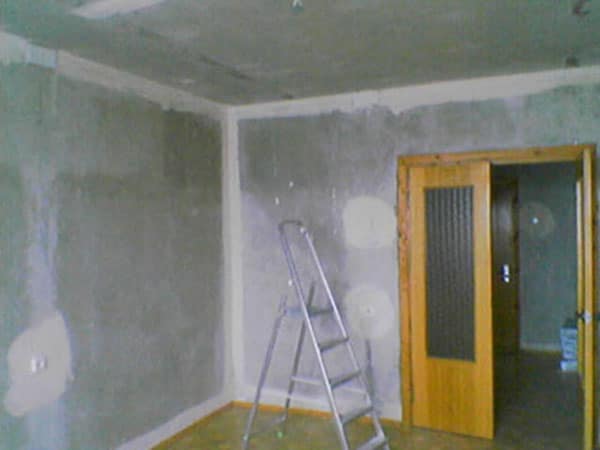

Another criterion that affects the expense is painting tools. Most often they use a regular flat brush or a round one - a brush. These tools are uneconomical, the mass is applied in a thick layer, drips and drops can form. The spray gun can significantly reduce material consumption and operating time. Often, instead of a spray gun, a back-blow vacuum cleaner and even hand-held tree sprayers are fitted.
Read also: Ficus microcarpa home care photo
How to calculate the amount of fluff and water
Before you dilute slaked lime for whitewashing, you need to perform some calculations. An approximate calculation of consumption is as follows.
First you need to calculate the area of the walls and ceiling that you plan to whitewash. For example: room 3 by 5 m, ceiling height 2.5 m. It was decided to process the ceiling and part of the walls from the middle of the height to the ceiling with lime whitewash.
Wall area: (3 * 2.5 + 5 * 2.5 + 3 * 2.5 + 5 * 2.5) / 2 = 20 m 2.
Ceiling area: 3 * 5 = 15 m 2.
Total area: 35 m 2.
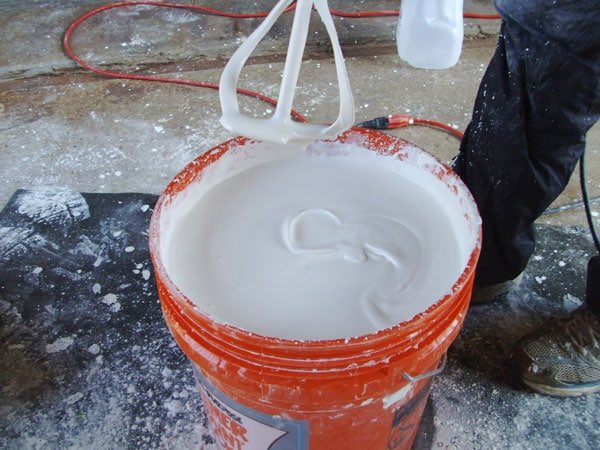

Based on the average consumption of 1 liter of solution per 2 m2 of surface, it is easy to calculate the required amount for whitewashing - 17.5 liters of lime solution. You can round up to 18, or better - up to 20, because the average consumption is a rather flexible concept.
That is, 20 liters of solution is required, and this is 5 kg of hydrated lime in powder. It is worth noting that the ready-made lime dough, which is sold in hardware stores, is diluted in the same proportion, which means that the calculation is correct for him.


Supplements to improve resistance and combat deficiencies ↑
Since lime has been used in construction for a very long time, there are many "folk recipes" and methods that improve the properties of this substance. Still, modern water-based paints appeared not so long ago, and craftsmen were forced to do chemistry right at their dacha or at home.
The first problem that is solved by adding a secret ingredient to the lime whitewash solution is shallowing. A dried surface tends to stain everything and everyone who touches it. What to add to lime so that it does not smear? This ingredient is found in every home - table salt. It has a good bonding effect. Add 100 g of salt per liter of solution.
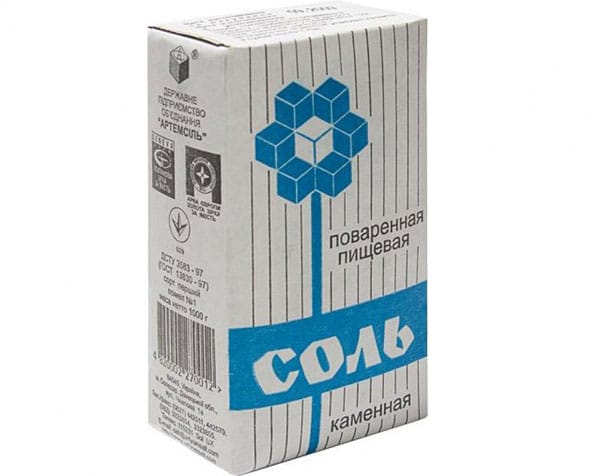

Another problem, especially when using whitewash for outdoor use, is the rapid rinsing off of the composition with water. It has long been known what to add to lime so that it does not wash off - a fatty component is introduced into it - drying oil. The drying oil repels water and allows the whitewash to last longer. Proportion 1:10, 100 ml per liter of solution.
Practicing the addition of laundry soap, grated on a coarse grater, PVA glue, wallpaper glue, acrylic primer. All this is done in order to ensure maximum adhesion of the whitewash to the wall, to exclude its swelling and bubbling.
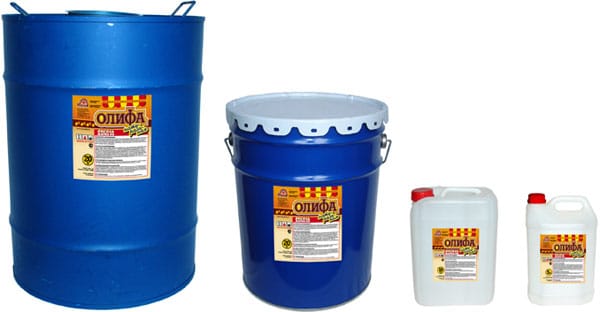

White is not the only possible color ↑
To prevent the lime coating from becoming yellowish, an ordinary blue is added to it - methylene blue. You will need 10-20 g per liter. The whitewashed ceiling will become snow-white. But sometimes it becomes necessary to obtain a lime solution of other colors. This mass cannot be called whitewashing, and not every dye is suitable. Use only those pigments that are resistant to alkaline conditions - mineral, but in no case organic.
Pigments used for lime paints:
- ocher (yellow tint);
- umber (greenish brown);
- red lead (orange);
- mummy (red-brown);
- chromium oxide (green);
- titanium dioxide (white);
- lithopone (white);
- ultramarine (blue).
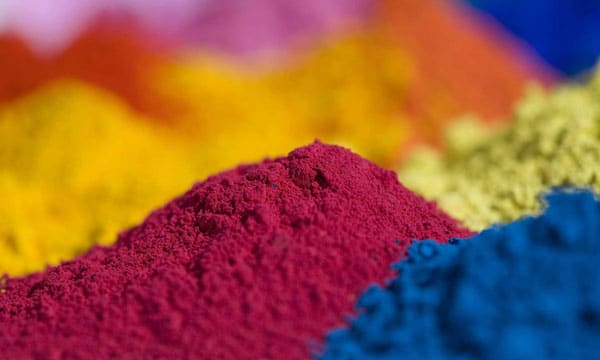

To prepare good quality lime paints, it is not recommended to add pigment in its pure form - powder. It is preliminarily diluted with water to obtain a paste. Then the pigment paste is allowed to infuse for about 24 hours. And only after that the dye can be added to the solution. This is because the pigment grains are often difficult to dissolve and can drag behind the brush, forming unsightly streaks of color.
How to prepare the surface?
The main goal is to create a solid and uniform surface with whitewash. To make a high-quality surface, it is pre-cleaned of dirt and greasy stains. If the wall is too dirty, then the layer of material is scraped off to the concrete base, this is the only way to ensure a reliable coating. You can remove oily or yellowed stains from the walls with bleach or whiteness. There is no need to prime the surface, the work is done in the evening or in cloudy weather to avoid sun exposure, otherwise the material may deteriorate.
Where is lime used?
As mentioned above, lime has high antiseptic qualities, therefore it can be used in unheated rooms with high humidity, for example, sheds, garages, workshops, basements, and other buildings. Walls and ceilings in the entrances of apartment buildings, kindergartens, schools, and other public institutions are also treated with lime. Since lime is resistant to precipitation and various temperatures, facades of houses, trees, curbs in the garden are treated with it. Lime is used to change the acidity of the soil, it protects trees from rodents, and gives them a beautiful appearance. You can also whitewash the walls in the foyer, entrance or corridor, while saving on costs, get a clean, neat look. Ceilings in kitchens or public buildings are whitewashed with lime, after the material has dried, it does not emit any toxins, and is safe. If it is necessary to process a large area of utility rooms, and save money, use a lime mortar. It is quite simple to prepare and apply, after drying it forms a white and clean surface.
Where is lime whitewashing used?
The antiseptic properties of the material made it the most demanded for use in kindergartens, medical institutions, and its durability - in public buildings with high traffic. The moisture resistance of lime allows you to use the mixture for wall decoration in swimming pools, saunas, showers.The low cost makes lime a profitable solution for spaces such as garages, closets, basements, and so on.
Whitewashing remains relevant not only for public places. It is actively used to carry out inexpensive cosmetic repairs in office premises, commercial facilities, city apartments, private houses and dachas. It is used wherever an inexpensive and high-quality wall decoration is needed.
Read also: Goat internal fat application
How to get lime correctly?
Before starting work, you need to calculate how much lime to buy, and what kind of slaked or quicklime it should be, as well as what other components are needed to prepare the mixture. This will help to immediately acquire the right amount of material to avoid repeated shopping if there is not enough solution. Slaked and quicklime types differ not only in the presence of calcium. For ordinary repair work in everyday life, slaked lime is used. It can be purchased in powder form at home improvement stores. If there is already a large amount of quicklime at home, and it needs to be used, then it must be extinguished, and then start to work. For self-repayment, you need to protect your eyes with glasses, and wear special clothing, work is done in the open air, since harmful vapors are released into the air.
How to work properly with each type of lime?
According to the slaking time, lime is divided into three types. The amount of time is calculated from the moment the material interacts with water, and until extinction. She may be:
- fast blanking, which lasts 7-10 minutes;
- medium blanking - up to 20 minutes;
- slow extinguishing - from 25 minutes.
- Quick slaking lime does not take much time. Lime is poured halfway into the prepared container, and filled with water so that it is covered. As a result, steam begins to appear, and the lumps break up. Then the composition is slowly and thoroughly mixed with a hard wooden object. Add a small amount of water again, and mix, this is done until the quenching is over, and the mixture becomes homogeneous. It takes up to 10 minutes to completely extinguish such lime.
- Lime of medium slaking must also be filled with water, the amount of liquid and material must be the same. In this case, lumps of lime crumble, but in this case they do not stop, but continue the quenching process until the composition becomes homogeneous.
- Slow slaking lime is poured into a container, a little more than half, and then water is gradually poured in small portions, for this you can use a kettle. When the lumps begin to crack and the quenching process begins, the amount of water should be reduced. As a result, lime is obtained in the form of a dough, it must be stirred well until smooth.
Not all lumps of lime can crumble and turn into a powdery state or lime dough, sometimes large pieces of an unburned look come across, they must be removed from the material. The quenching process must take place in full, so that as a result there are no residues of magnesium and calcium, otherwise the quality of the building composition deteriorates.
When quenched, the temperature rises to 150 degrees, magnesium and calcium turn into hydrates, and lime lumps take on a loose state.
How to extinguish lime?
To extinguish lime, prepare a deep container, and a stick to stir the composition. For one kilogram of lime in lumps, one liter of cold water is used. Pieces of lime are put in a container, and they are poured with water, then they are carefully altered. At the same time, the mixture begins to hiss, as if boiling, which means that a reaction has begun to occur. After the hissing is over, the lime becomes in the form of fluff, but it is not yet suitable for whitewashing, it is left for up to two weeks, and then used in the preparation of the solution.The extinguished material is removed to a cool place for settling.
Thus, you can prepare a lime whitewash solution yourself. If necessary, lime is slaked or purchased already slaked. To prepare a high-quality mixture, all proportions must be observed when making a whitewash solution. If everything is done correctly, the composition will adhere firmly to the surface, without cracks and delamination.
How to properly prepare slaked lime for whitewashing?
Before starting whitewashing, it is necessary to prepare the composition, lime in the form of lumps must be extinguished. At the end of the process, fluff or lime is formed in the form of a dough. The extinguishing must take place correctly, otherwise a poor-quality composition will result. To make fluff, quicklime is poured with water, all materials are taken in equal quantities. That is, 3 kilograms of lime, 3 liters of water. All work must be done in order.
- First, you need to prepare the container for work, it must be clean and large, since the usual bucket is not enough to dilute the mixture.
- The required amount of quicklime is poured into this container.
- Then add the required amount of water. As a result, a strong reaction occurs, in which the temperature rises to almost 150 degrees, the composition begins to hiss, and scatter in different directions. When slaking lime, it is necessary to use protective equipment for the eyes and hands, that is, wear gloves and glasses so as not to damage the mucous membrane and skin.
- Such boiling can occur up to 30 minutes, after it stops, the composition must be thoroughly stirred to obtain homogeneity, this is done with a stick or other solid object.
The preparation of lime in the form of a dough is carried out in a similar manner. Solid pieces of material are poured with water, after the composition stops boiling, it is stirred. But at the same time, the amount of water should be about 40 percent of the weight of the lime. The liquid is topped up gradually, in small amounts, when the hissing becomes less, add the next dose of water. Lime in the form of a dough is used in the production of plastering compounds, and for the plasticization of cement mortar.
Lime is not used immediately after slaking; it is placed in a cool, dark place for two weeks. After this period, it gains disinfection properties, and also lays down well on the surface.

